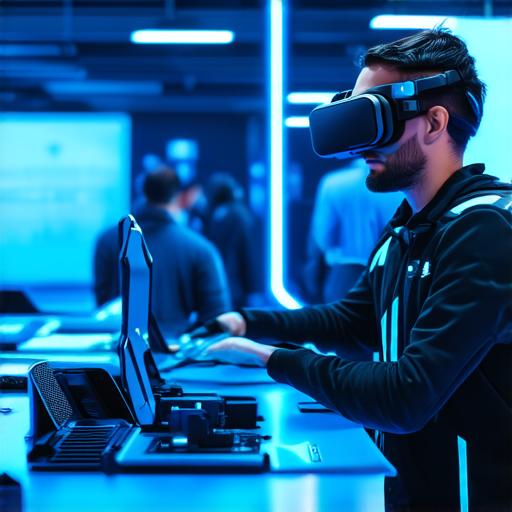Introduction
Augmented reality (AR) and virtual reality (VR) are both emerging technologies that have gained significant attention in recent years. While these two terms are often used interchangeably, they refer to distinct concepts. In this article, we will explore the primary difference between AR and VR and provide examples of how each technology is being used in the real world.
Augmented Reality vs. Virtual Reality
AR refers to a technology that overlays digital information onto the real world. This allows users to see and interact with virtual objects in their physical environment. In contrast, VR involves creating a completely artificial environment that users can enter and interact with as if it were real.
One of the key differences between AR and VR is the level of immersion they offer. While AR provides users with a more natural and interactive experience, VR offers a fully immersive experience that can be incredibly engaging and transformative.

Another difference is the way in which users interact with the technology. In AR, users typically use their smartphones or tablets to view and interact with virtual objects. In VR, users wear specialized headsets that allow them to fully immerse themselves in the virtual environment.
Real-World Applications of Augmented Reality
Retail:
AR can be used to enhance the shopping experience by allowing customers to see how products would look in their homes or on their bodies before making a purchase. For example, IKEA’s AR app allows customers to visualize furniture in their homes before buying it.
Education:
AR can be used to create interactive and engaging learning experiences for students. For example, the AR app Aurasma allows teachers to create lessons that incorporate virtual objects and animations.
Healthcare:
AR can be used to enhance medical procedures by providing real-time information and visual cues to surgeons and other healthcare professionals. For example, the AR app Vuforia allows surgeons to view 3D models of organs and bones during surgery.
Real-World Applications of Virtual Reality
Gaming:
VR offers a fully immersive gaming experience that can be incredibly engaging and transformative. For example, the Oculus Quest 2 allows users to play games in a virtual environment that feels completely real.
Training:
VR can be used to create realistic training simulations for a variety of industries, including aviation, military, and healthcare. For example, the VR simulator FlightAware allows pilots to practice flying in a safe and controlled environment.
Tourism:
VR can be used to provide virtual tours of destinations around the world, allowing users to experience different cultures and landscapes without leaving their homes. For example, the VR app Google Expeditions allows users to take virtual tours of museums, art galleries, and other cultural institutions.
Summary
In conclusion, AR and VR are two distinct technologies that offer different levels of immersion and interactivity. While both technologies have real-world applications, they are best suited for different purposes. AR is ideal for enhancing the shopping experience, creating engaging learning experiences, and improving medical procedures. VR, on the other hand, is ideal for gaming, training, and tourism. As these technologies continue to evolve, we can expect to see even more innovative applications emerge in the future.
